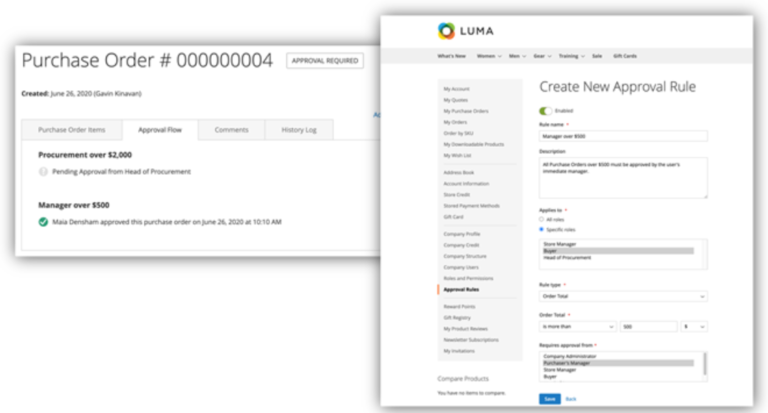Learn more about smart eCommerce strategy from the dedicated webinar:
Another thing that you should consider is your catalog size and the visitors base. If you have one million SKUs and more, it might not be smooth for some platforms to handle such an amount of data. Or, if your business model will be using flash sales with hundreds of orders per minute, it might be an overkill for most platforms as well. And, you assume we say that Adobe Commerce can easily cover the mentioned cases, right? We wish we could say that. But, as mentioned earlier, with Adobe Commerce, you may tweak any part of the system. And it’s applicable for the performance tweaks as well.
Know Your Business and Its Uniqueness
So, to summarize, when choosing an eCommerce platform, you need to think of the following factors first:
The main question is: would it be great to have this discounting system out of the box, without additional investments? Obviously, the answer is yes! In some rare cases, only one thing is required on top of the core functionality that most platforms provide. In other cases, there are, at least, a couple of other extra features that are a must-have for a merchant’s business.
When a merchant decides to run an eCommerce store, the very first challenges he/she meets is choosing a platform for this store. Like with many other products, it’s not as easy as googling for “the best eCommerce platform”. There are many factors that should be taken into account, and not all of them are obvious.
With these two items of your business model, you may check the capabilities of different platforms on the market. The main goal is to find a platform that covers the mentioned scenarios. For this particular example, Adobe Commerce Cloud covers both cases. It has a pretty robust system of catalog/shopping cart price rules and Live Search based on the AI system called Sensei. Does that mean that Adobe Commerce Cloud is a silver bullet? Not so fast.
Define the Right eCommerce Structure
And even now, it does not mean that Adobe Commerce is an all-rounder. Think about the opposite example, when you need only a core eCommerce functionality, have a small catalog and a tiny customer base. There’s one or a couple of extra things that might be covered by free apps. And, finally, you don’t need all the instruments Adobe Commerce provides out of the box. Obviously, investing in an enterprise-oriented platform may not be a smart decision.
- The first one is the customer journey-oriented approach. The main idea is to “guide” customers through the catalog, use different configurators/wizards to create a proper set of products in the shopping cart.
- The second one is the search-oriented approach, when the main navigation through the site is performed by searching for something. An excellent example of the last one is a marketplace like Amazon.
You need to identify what makes your business unique and how you plan to engage your customers.
When we are talking about Adobe Commerce, we may say that it’s the richest eCommerce platform on the market in terms of functionality. There is a significantly higher chance that in this particular platform you will find whatever you are looking for without extra developments on top of it. Also, there are thousands of extensions on the Marketplace that may fulfill your needs.
Be One Step Ahead
Thank you for reading.
For example, you should consider the cost of the first version of your store not only by checking the price of the platform itself. All the additional functionality you might need, as a rule, will be provided either by paid apps/extensions or by custom development. And that fact also requires some additional budget. Below, we outline the key factors you should review before jumping into a new ecosystem.
Adobe Commerce vs Other eCommerce Platforms
So, if your store will use the second search-oriented model, you need a well-organized search on your website. In this case, the well-organized means support the synonyms, stopwords, filters, suggestions, etc. Moreover, it’s not a “luxury” case to have an AI-based search nowadays. We believe you got the idea that having this feature out of the box would be great as well.
Besides the mentioned functionality, it makes sense to think about the perspective. Most likely, if you are mindful enough, you will not put everything into your store’s very first release (if you are curious about the details, check our webinar about choosing the correct strategy). It means that you have a backlog of developments for the future. In such case, it makes sense to check the capabilities of different platforms, considering the features planned for the future.
Consider The Size
At some point in time, you will face the situation when no platforms cover your particular business need out of the box. So, you need either a 3rd party solution or a team of developers who will bring the missing feature. It makes sense to discover the market from this perspective as well. If you see that you may need a lot of custom development in the future, it’s good to check the development price for different platforms. Frankly speaking, Adobe Commerce, in terms of custom development, might cost you. Does that mean that you should stay away from Adobe Commerce and look for something else? Fortunately, it’s not that simple.
Choose Your Right Solution
Let’s review an example of a store where you are going to have a sophisticated sales system. Such systems provide discounts for different goods according to the predefined rules. As a result, customers with a matching set of products in the shopping cart should receive a discount [usually during a particular period of time]. The discounting system should include many factors that play a role in generating the final price.
There are many other factors to consider, but we outline the most common of them. In many cases, it might not be easy to calculate some aspects. For example, “What is ROI in terms of maintaining and improving your store”. To find the right answer, we would recommend contacting a person or an agency that will help you create a concept of your business needs in terms of the eCommerce ecosystem. If you still have doubts, feel free to contact us. We may always have a couple of good advices for you, especially considering 10+ years in eCommerce development.
- Functionality that the platform provides out of the box.
- Functionality that can be easily added on top of the basic features.
- How many “unique” business cases do you have, and how expensive it will be to reflect them in the eCommerce store now and in the future.
- The size of your catalog now and in the nearest future.
- Number of customers do you expect during the day now and in the future.
- What is ROI in terms of maintaining and improving your store.
If you have some other factors that you would like to share, please, feel free to add your thoughts via the comments section below.
In terms of customizations, Adobe Commerce holds one of the leading places on the market. Literally, you are allowed to change the system behavior according to any of your needs. Competitors like Shopify, BigCommerce, and others have a strict set of limitations in terms of system customizations compared to the platform from Adobe. Moreover, with Adobe Commerce, you may have all your modifications within the system itself. It means you don’t need to “rent” a self-hosted application and transfer your personal data there for every new function (it’s a typical case for Shopify and similar SaaS solutions).
Another example is related to the site search. In general, we may outline two main categories of the eCommerce store structure:
First, we need to understand that all eCommerce platforms provide more or less the same core functionality. Customers can browse/search the catalog, review product details, add them to the shopping cart, choose a delivery method and pay for the order. At the same time, all merchant’s business models are unique. And that’s the reason why requirements for an eCommerce platform shall cover more than just the core functionality.






